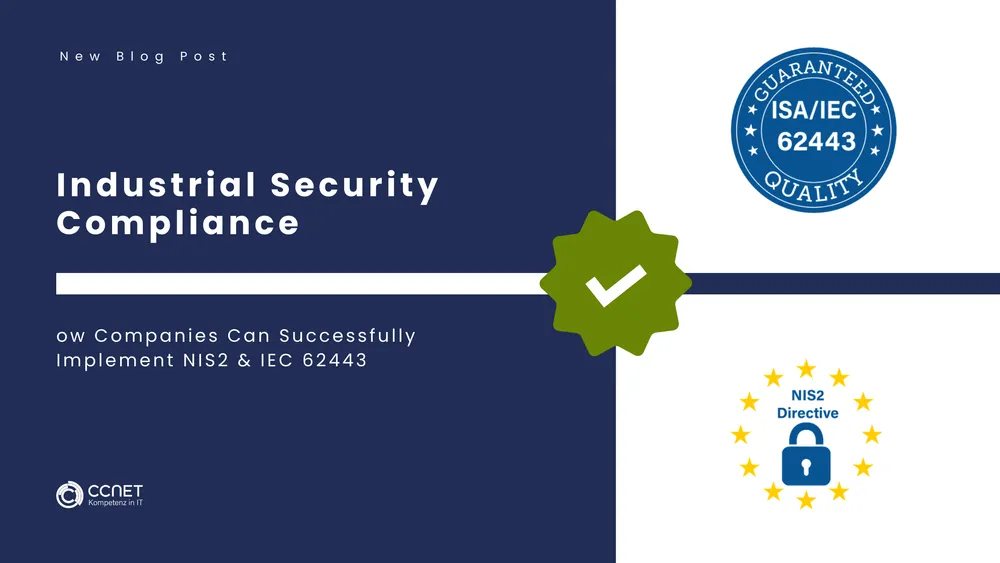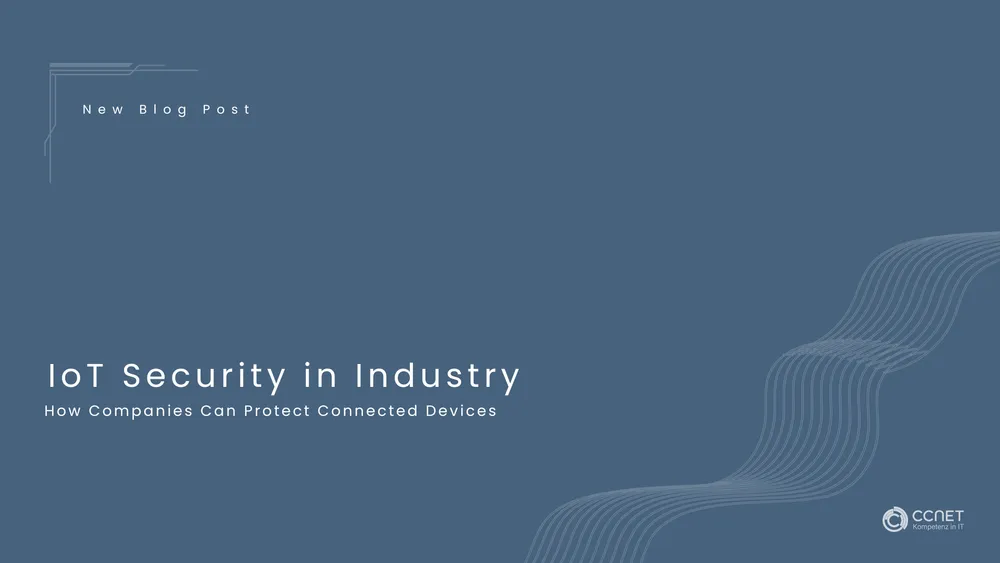
CCNet
May 2, 2025 • 2 min read

Zero Trust for industrial companies: Why Trust Is Not a Strategy
In today's connected industry, trust is a security risk.
Production networks are no longer isolated islands – machines, IoT sensors, and IT systems communicate with each other constantly. However, this connectivity provides attackers with new opportunities to gain unnoticed access to sensitive areas.
Many companies still operate under the old model:
"Once authenticated = Full access"
But this no longer works. Attacks come not only from the outside but also from the inside.
The Solution?
Zero Trust Security: "Trust no one – verify everything."
Further information can be found here: consultation
What Does Zero Trust Mean for Industrial Companies?
The Zero Trust model is based on a simple principle:
- Every user, device, and data flow is considered potentially dangerous.
- Access is never automatically granted – instead, it is verified for each action.
- No difference between internal & external networks – every device must authenticate.
This is especially important for production networks, which are still often unsecured.
Common Security Gaps in OT security & IoT Environments:
- Direct connections between IT & OT without access control
- Uncontrolled remote access to PLC & SCADA systems
- Outdated machines using insecure protocols (e.g., Modbus, OPC UA without encryption)
- Lack of monitoring for insider threats & compromised user accounts
Zero Trust ensures that every access request is verified, regardless of its origin.
3 Real Cyberattacks That Could Have Been Prevented by Zero Trust
-
Ransomware Attack on Italian Manufacturing Companies (2022)
Hackers used compromised credentials from a third-party remote maintenance provider.
Consequence: Production networks were encrypted – millions in losses.
How Zero Trust Would Have Helped: Multi-factor authentication (MFA) + access restrictions would have prevented the attack. -
Attack on a European Automotive Company (2021)
An unnoticed attacker moved through internal networks for weeks before striking.
Consequence: Theft of production secrets.
How Zero Trust Would Have Helped: Micro-network segmentation + continuous authentication would have stopped the attacker. -
Insider Threat in an Italian Pharmaceutical Factory (2020)
A former employee still had access to machine controls.
Consequence: Production batches were manipulated – recall of medications.
How Zero Trust Would Have Helped: Access to machine controls would have been automatically revoked.
Conclusion: Access Rights Must Be Dynamically Managed & Regularly Reviewed
How Companies Can Implement Zero Trust Security
-
Strict Separation of IT & OT Networks
Zero Trust relies on micro-network segmentation – no direct data flow between IT & production networks.
Access to machine controls should only be allowed via secure gateways. -
Identity & Access Management (IAM)
Every access request must be authenticated & authorized (e.g., with Keycloak).
Multi-factor authentication (MFA) for critical production systems. -
Least Privilege Access – Minimal Rights for Maximum Security
Employees & service providers receive only the exact access rights they need.
Every permission is regularly reviewed & automatically revoked if inactive. -
Real-Time Monitoring with SIEM & IDS
Security Information & Event Management (SIEM) analyzes all access activities & detects suspicious behavior.
Intrusion Detection Systems (IDS) prevent unauthorized access to machine controls. -
Network Segmentation with Next-Gen Firewalls & Encryption
Each department & production system is logically separated.
Unencrypted communication within production networks is eliminated.
Conclusion: Zero Trust Is the Future of Industrial Cybersecurity
Traditional security models are no longer sufficient – production networks are too interconnected.
Every device, user, and access request must be continuously verified.
Zero Trust protects not only against external hackers but also against insider threats.
Visit Us at SPS Parma and Learn How Zero Trust Works in the Industry


